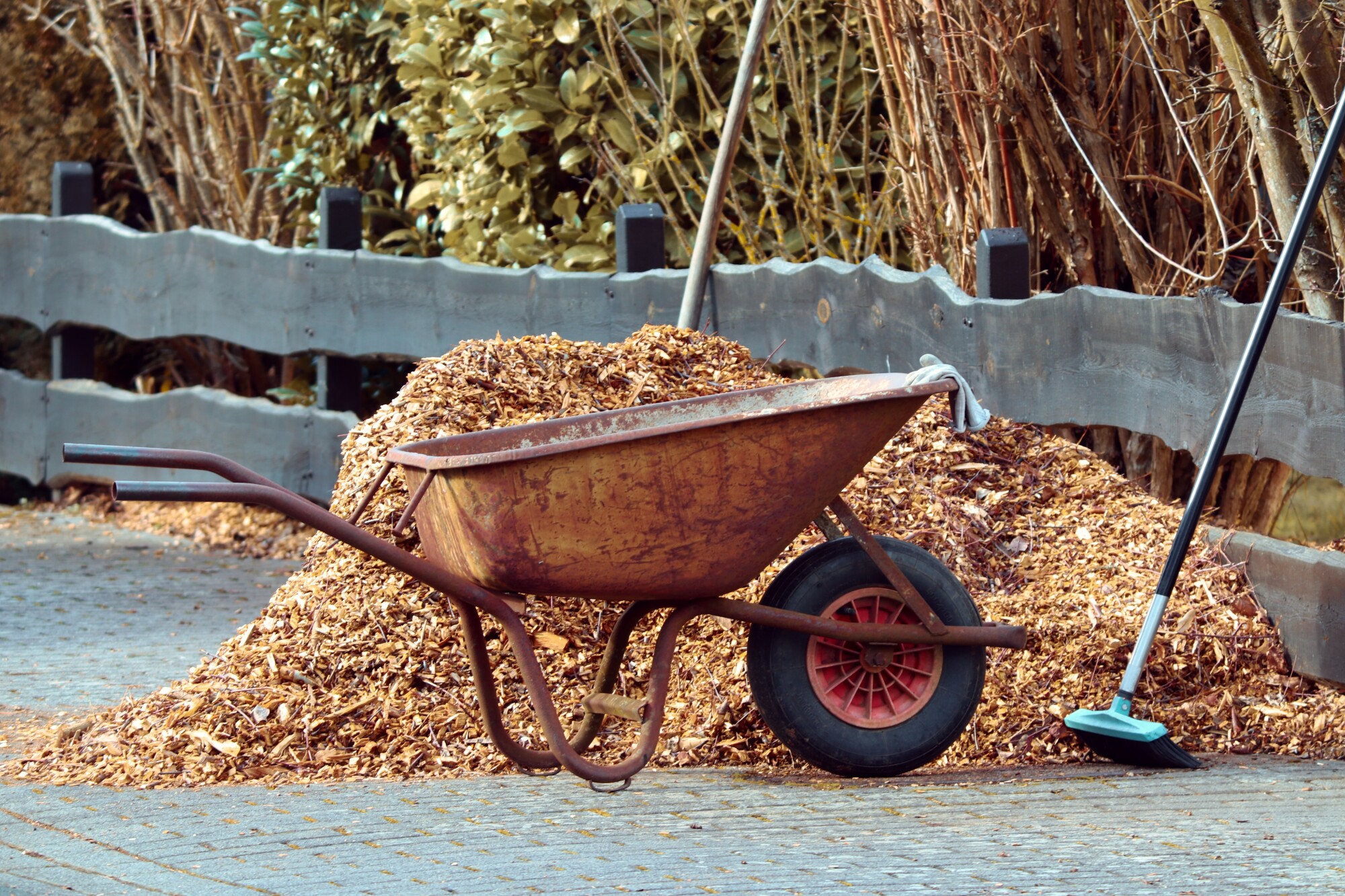Ongoing research proves that mulch is beneficial to your garden. It decreases summer soil temperatures by up to 13° reduces weeding time by around two-thirds.
The trouble with traditional mulch is that you need to replace it regularly to enjoy these ongoing benefits. So, if you’re looking for another way to enjoy the same perks without the hard labor, keep reading.
These are the best mulch alternatives for your landscape design projects.
1. Pebbles and Rocks
Small rocks and pebbles don’t decompose and are an excellent alternative to traditional organic mulches. They help retain moisture in the soil but won’t add any additional nutrients to your garden beds.
You can still infiltrate your soil with vital nutrients by fertilizing the lawn adjacent to your flower beds. When you water your lawn, the goodness supplied by the fertilizer filters into the surrounding soil too.
They’re particularly handy in cold climates since they retain heat well and keep the soil warm. In this way, they can often extend the growing season of your plants.
One of the drawbacks of these popular landscape materials is that it’s a time-consuming chore to remove them if you change your garden design or if you want to apply a different kind of mulch to that area.
2. Pine Needles and Leaves
Like bark and wood chips, these organic materials can add much-needed nutrients to the soil as they decompose. Unlike wood and bark chips, they’re a cheap waste material that you’ll have free access to every fall.
You will need to replenish this type of mulch as it decays but that’s no problem since you’ll have a plentiful supply when the weather starts to cool.
For best results, you should shred leaves before applying them to our garden and let them dry out before you add them. This reduces the chance of pests and bacteria making themselves at home in your mulch.
If you don’t have access to a pine tree, you can buy bundles of pine needles from your nearest garden store. Pine needles work well with gardenias, chrysanthemums, and roses. The needles from your holiday tree will work just as well if you only have one bed of these specimens.
3. Grass Clippings
Mowing your lawn’s an important part of maintaining a gorgeous summer and spring landscape, and you can use the grass clippings to good effect as a mulch too.
They’re a cost-effective solution to your mulching needs but you should always dry them out before using them. They’re particularly good for protecting plants from the sun’s heat.
A word of warning, you shouldn’t use grass clippings from your lawn if you treat your lawn with chemical weed killers.
4. Newspaper
Newspaper is biodegradable, so it’s an effective material for mulching your garden. You’ll need to shred the newspaper and moisten it slightly before you apply it to your garden. This stops it from blowing away.
Laying mulch like this involves placing five to eight sheets worth of newspaper on the ground at a time and then covering it with organic mulch like compost.
This is an affordable and easy-to-apply type of mulch but it’s not as visually appealing as the other kinds.
5. Modern Mulch Alternatives
Decomposed granite is one of the most innovative landscape ideas of modern times. This term refers to any granular stone surfacing material with exceptionally fine particle sizes.
This material contains particles of various sizes combined to create the perfect mulching material.
This blend of fine and medium dust-like particles creates a firm surface after it’s moistened and compacted. So, it doesn’t crumble or become finer over time.
When you use decomposed granite for landscaping, you’ll discover these benefits and many more.
6. Recycled Rubber Chips
Eco-friendly gardeners love this mulch alternative since it’s made from recycled car tires. It also doesn’t rely on the use of trees and other valuable resources for its production, like wood chips or bark.
Rubber’s good for repelling weed growth and fungus and insulates the soil from both heat and cold. Like rock mulch, it doesn’t add anything to your soil.
It lasts much longer than wood mulch and since it’s usually black, it doesn’t stand out much when applied to your garden beds.
7. Pea Gravel
Pea gravel has many of the benefits of rocks and pebbles when used as mulch. You can also use this type of mulch to keep weeds down on unpaved pathways and driveways.
These small stones often occur near water features. They have an attractive smooth, round shape because of natural weathering. Pea gravel’s available in a range of attractive colors like white, gray, translucent, and rust-brown.
The stones are lightweight and porous, so they ensure proper drainage from your garden. Garden pests like rodents, termites, and other critters can’t gnaw through these stones, so they’re a good barrier against these creatures.
You’ll need to use an edging material along the edges of any area where you’ve used pea gravel as these small stones will scatter if they’re not contained.
One drawback of pea gravel is that it’s not suitable for placement of garden furniture and it’s difficult to push a wheelbarrow on top of it. So, while it’s an attractive addition to seating areas and pathways, it’s not always a practical solution.
Find More Alternatives For Your Home
Gardening’s a healthy, fun, and creative pastime – if you can avoid some of the backbreaking work.
So, it’s refreshing to know that these mulch alternatives can take some of the hard work out of gardening, giving you more free time to indulge in even more garden upgrades.
Explore our blog for more inspirational ideas on home improvement, including all the best interior and exterior design hacks and tips.

